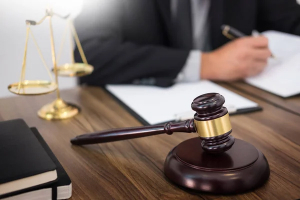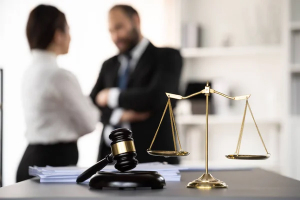

Peace is a valuable thing. Many people spend their entire lives seeking it. It can be very distressing when someone does something to disrupt it, whether in a public place or at home. Loud and unreasonable noise is one of the primary culprits that disrupt peace, whether it invades the person's home space or in a public area.
Fighting or using offensive or abusive language in a public area also disrupts the peace that the people in that space are entitled to. They are disturbing the peace.
Most people are well aware of the term "disturbing the peace" but may not realize that it is a valid legal term – or that it is considered to be a crime. Those that do know it is a crime may not understand the legal ramifications of the act.
It can carry penalties that include not only a fine but also putting you behind bars in the county jail. A disturbing peace conviction can remain on your criminal record.
If you have been arrested for peace-disturbing behavior, here's what you need to know.

If you have been arrested for disturbing the peace, you need to secure legal representation quickly. It may not seem like much to you, but these types of offenses stay on your criminal record, and they can put you in a bad light when prospective employers or landlords check you out. It can make you look unstable or give the impression that you are a troublemaker – neither of which is a favorable attribute for a tenant or employee.
At The Law Offices of Frances Prizzia, we understand how even a misdemeanor criminal conviction can negatively impact your future. That is why we are dedicated to fighting for your rights and working tirelessly to get you the best possible outcome for your case. We have the experience, knowledge, and skill to effectively handle your case.
So, if you are facing charges for violating California's disturbing the peace laws, call us first. We are in your corner, and we will fight for you.
California Penal Code Section 415: Disturbing the Peace establishes penalties for three types of actions that are legally cited as being peace-disturbing behavior:
The offense of disturbing the peace can result in either an infraction or a misdemeanor charge. How the offense is charged depends largely on the seriousness of the act. It also determines the severity of the penalties.
For each type of behavior, the prosecutor, usually the district attorney or assistant district attorney, must prove specific factors in order to get a conviction.
In order to prove a charge of disturbing the peace by fighting or challenging someone to fight, the prosecutor must establish all three of these elements about the defendant:
This can include making criminal threats against someone that would incite a violent reaction from them. This can lead to more serious crimes like assault and battery or domestic violence crimes.
In order to prove a charge of disturbing the peace by causing loud and unreasonable noise, the prosecutor must establish these elements about the defendant:
While this includes making loud or unreasonable noise, it also involves a malicious intent component. Making unreasonably loud noise is not necessarily the issue. The intent behind it can increase it to a misdemeanor charge. Playing loud music is a significant part of it, but any source of malicious noise that is unreasonably loud may, at the very least, warrant an infraction.
In order to prove a charge of disturbing the peace by using offensive language, the prosecutor must establish these elements about the defendant:
In today's society, many people don't necessarily see the use of offensive language in public as disorderly conduct. However, California Penal Code Section 415(3) says that it is, and it can definitely incur criminal charges. This can include racial or ethnic slurs, as they are certainly offensive and likely to provoke violence. While we do have a right to free speech, we all also have a right not to be attacked or demeaned because of our gender or race.

The Orange County legal system has certain procedures for processing criminal cases, like disturbing the peace.
A. Arrest and Booking Procedures – When a person is arrested, the police officer takes him to jail. The defendant is released because the prosecutor does not file charges, makes bail or is released on their own recognizance, or remains in jail.
B. Arraignment and Plea Options – The first time the defendant appears in court is at the arraignment. This is where the judge informs the defendant of the charges against them, their constitutional rights, and that they have the right to an attorney.
At that point, the defendant enters a plea in answer to the charges against them. They can plead guilty, not guilty, and no contest. No contest is the same as not guilty, but if a civil lawsuit is brought against the defendant in relation to the crime they are convicted of, the conviction cannot be used in that suit.
C. Pre-Trial Motions and Discovery Process – After the arraignment, both sides begin preparing for the trial. They exchange information, including evidence, in a process called "discovery." Either side can file pre-trial motions during this time, which can include a motion to dismiss the case, a motion to set aside, or a motion to prevent the use of certain evidence at the trial. The defendant can also change their plea at this time.
During this time, the lawyers and the judge may also meet to discuss how to resolve the case without taking it to trial.
D. Trial Procedures and Presentation of Defense - The jury is chosen before the trial begins, and the attorneys on both sides participate. The trial commences with opening statements presented by each party, and then they begin presenting their evidence and witnesses. Once all the evidence has been presented, each attorney gives their closing arguments. At that time, the jury deliberates to determine whether or not the defendant is guilty. It must be beyond a reasonable doubt if they find the defendant guilty.
E. Sentencing and Post-Conviction Options – The defendant will be sentenced after the jury returns the verdict. The judge will follow the guidelines set forth in the law, but sometimes he may exercise their authority to make some modifications by increasing or lessening the sentence.
After the trial, the defendant has the right to file an appeal. For misdemeanor cases, the defendant has 30 days from the date of the order or judgment to file the appeal. Certain requirements must be met. A criminal defense attorney is invaluable at this point in the process.
Sometimes it is worth exploring alternatives to going to trial for your disturbing the peace trial in Orange County. Your attorney can help you with these, and it could mean you can avoid jail time or more.
A. Plea Bargaining and Negotiation Strategies – You and your attorney may be able to negotiate a plea bargain with the prosecuting attorney. Your lawyer will point out the options available to you and present the deal so that you can make a well-informed decision regarding whether to accept it or not.
B. Diversion Programs and Counseling Options – In some cases, certain programs may be available for you to attend in exchange for reduced jail time or in lieu of jail. Counseling may also be an option.
C. Expungement and Record Clearing Opportunities – After you've done your time, you may want to explore getting your disturbing the peace conviction expunged from your record. This is done on a case-by-case basis. Your attorney can help you.

California Penal Code provides legal consequences for the crime of disturbing the peace. That includes imprisonment in the county jail for a maximum of 90 days, and in some cases, up to six months, a fine for a maximum of $400, or both. That is one reason that a solid defense strategy is so important.
There are several strategies that your defense attorney may pursue for you. Each is different, so choosing the most effective defense is done case by case. However, there are some common defenses for disturbing the peace. They are tailored to apply to the specific case.
Your attorney will show that you had no malicious intent behind the loud music or noise. Further, you were unaware that anyone else was or would be disturbed by it because no one approached you and requested that you turn it down – especially the person who made the complaint. If the person making the complaint without asking you to lower the noise, thus not giving you a chance to show that there was no malicious intent, the charge for disturbing the peace cannot stand.
If the charge is for inciting violence, you can claim that you did not carry out the act with intent, maliciousness, or willfulness. Your attorney will show that you reasonably believed your words did not have the likelihood to provoke an immediate, violent reaction, so you should not be found guilty of disturbing the peace.
Your attorney will show that the United States Constitution protected your behavior, so your charges for disturbing the peace should be dismissed. Suppose your conduct or words are found to be protected. In that case, you cannot be found guilty of disturbing the peace because doing so would violate your right to free speech that is granted to you under the First Amendment of the Constitution of the U.S. It is not a wrongful act if it is protected.
All criminal offenses require evidence in order for there to be a conviction. If the prosecution does not have sufficient evidence to prove that you are guilty of the crime you are accused of committing, then you cannot be convicted. By claiming insufficient evidence, you are showing that there isn't enough evidence against you to prosecute.
You might be falsely accused of disturbing the peace for many different reasons. You can show that the person falsely accused you of disturbing the peace is a disgruntled neighbor or jilted partner seeking vengeance against you. If you embarrassed or humiliated someone and they sought revenge against you by making a false claim about you.
If you felt that a law enforcement officer acted against you because they didn't like your attitude or the way you behaved so out of spite, they wrongfully arrested you.
Your attorney will show that you fought solely to protect yourself or someone else. They will also show that you did not use more force than was necessary to protect yourself and that you found and still find that person to be a threat to you.
You cannot be convicted of disturbing the peace if you were defending someone else or yourself, but your claim of self-defense must meet certain criteria:

If you have been arrested for disturbing the peace in Orange County, you are going to need an experienced defense attorney who will defend your cause and ensure the protection of your right. This criminal charge can be serious because the prosecutors will be throwing everything they have at you to show you were acting maliciously and were intentionally playing music too loud, making too much noise, or unlawfully fighting.
But we will fight back when you have The Law Offices of Frances Prizzia in your corner. We will craft a solid defense strategy and stand with you every step from your first contact with our firm until trial and beyond.
Call today for your free consultation and get that peace of mind that comes with knowing you have strong, competent, knowledgeable, experienced, and aggressive legal representation. We're on your side, and we will fight for you.
Can I be arrested for disturbing the peace without intent?
If you can show that intent was not present when you were arrested for disturbing the peace, then it cannot stand up in court, and you will not be convicted. However, you may still be arrested. Your lack of intent will be shown and explained when you go before the judge.
How long does disturbing the peace case take to resolve?
The criminal charge of disturbing the peace can take a few weeks to resolve, or it can take months - even years. It really depends on the unique elements of your case.
Can I fight disturbing the peace charges on my own?
You are not advised to try to handle disturbing the peace charge yourself. A good defense attorney is best equipped to handle your case and navigate the complex legal system. They are highly trained and skilled in criminal law and have the experience to handle whatever situations come out of your case. Not getting counsel to represent you could lead to charges for a more serious crime or more jail time.
Will disturbing the peace conviction affect my criminal record?
It can. A misdemeanor disturbing the peace conviction can show up on your record.

Call us about your case today at
(714) 362-0157 for a
Free Confidential Consultation.

Client Centered Approach

Reputation by Excellence

Experience

Innovative & Determined

You're Not Just Another Client

AVAILABLE FOR YOU NOW
"*" indicates required fields